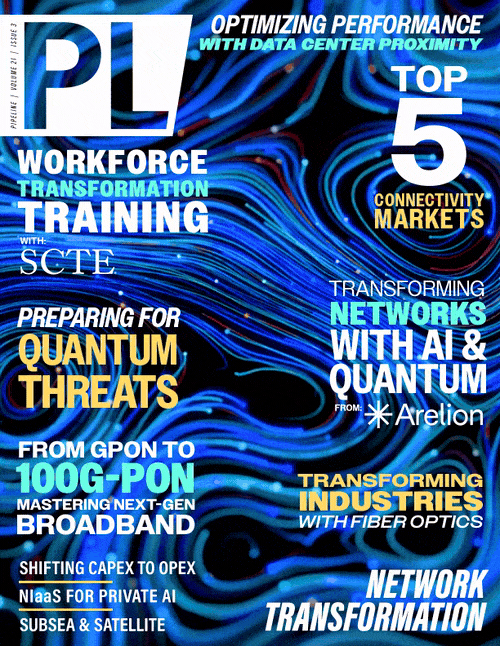Article Index for the January Issue:
January 2025: Network Transformation
January 2025: Network Transformation
Network Transformation: Optimizing Data Center Locations and Carrier Relations for Enhanced Performance
By: Carlie Shooner
» read this article
Measuring Interconnectivity: Five Fast-Growing Connectivity Markets to Watch in 2025
By: Jonathan Hjembo
» read this article
Evolving Workforce Training for
Network Transformation
By: Maria Popo
» read this article
Tying Everything Together: Why AI Is Just
One Thread in Network Transformation
Adaptation and creative problem-solving have always driven network transformation. While transformation is unpredictable, we can ponder its potential trajectory by exploring previous trends.
From the advent of specific legacy protocols to the proliferation of Dense Wavelength-Division Multiplexing (DWDM) and Ethernet, numerous innovations have persevered while others have fallen by the
wayside. In recent years, hyperscalers’ cloud computing requirements redefined network design and operations as service providers invested in their infrastructure to maximize key connectivity
qualities essential to these business needs…» read this article
How to Prepare your Network Today for
the coming Quantum Effects
By: Rana Kanaan
» read this article
How Fiber Optic Networks are Driving Digital Transformation Across Key Industries
Fiber optic networks are more vital to the digital economy than ever. Innovations in high-definition (HD) video, IoT (Internet of Things), Machine Learning (ML) and AI (Artificial Intelligence) applications are placing increasing demands on the network infrastructure. In addition to the increasing capacity demands, enterprises are requiring more scalability, security and low latency performance to run their cloud applications. The drivers of fiber connectivity growth extend across data center and multi-cloud networking, edge computing, smart appliances, telecommuting, telemedicine, remote learning, e-commerce, and other applications…» read this article
From GPON to 100G-PON: Building Flexible
Broadband Networks for the Future
By: Hy Huynh
» read this article
From CapEx to OpEx: How Network-as-a-Service
(NaaS) Shifts the Financial Burden of Networking
By: Rishit Lakhani
» read this article
Connecting Continents: Bridging the Digital Connectivity Divide for Digital Transformation
By: Ivo Ivanov
» read this article
In the Evolving AI Landscape, Telecoms
See New Opportunity
By: Steve Douglas
» read this article
Letter from the Editor - January 2025
Future predictions will dominate the headlines in the coming months as pundits postulate on where the world is going. But it’s important to discern the noise from information you can trust. Pipeline recently entered its 21st volume, encompassing over 250 issues, thousands of articles, countless (over 20,000) news stories, and over 20 years of industry insights. This gives us a keen perspective about where the world is headed, and our past predictions have panned out pretty well. I've been here long enough to remember back around the turn of the century, when we asked why Microsoft was still shipping CD-ROMs when cloud and SaaS models first began to emerge…» read this article
Enterprise & IT Industry News
As we kick off 2025, a transformative year that could see an acceleration in Artificial Intelligence (AI) and quantum computing, we are share our final roundup of news stories of 2024 to help set the stage. The month’s top industry news stories are summarized below. To view current breaking news in real-time, visit Pipeline’s News Center, follow Pipeline on social media, or subscribe to receive our weekly industry enterprise and communications technology news summary…» read this article
Q-Day Prevention: Combating Protons with Photons
…» read this article

















